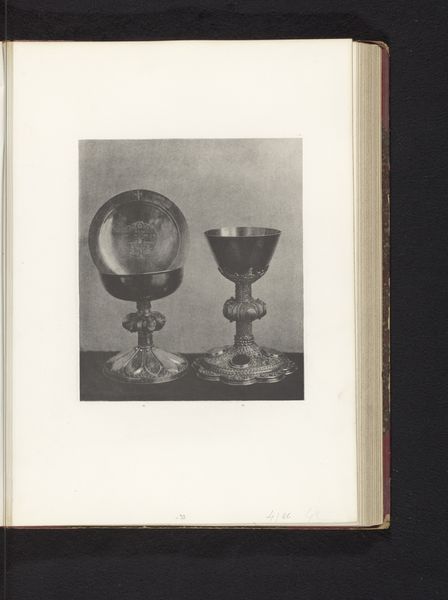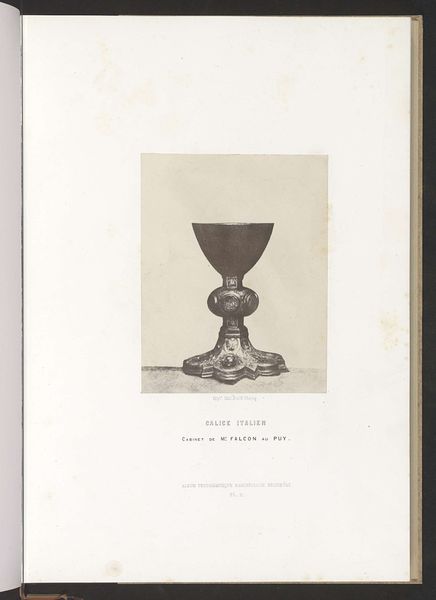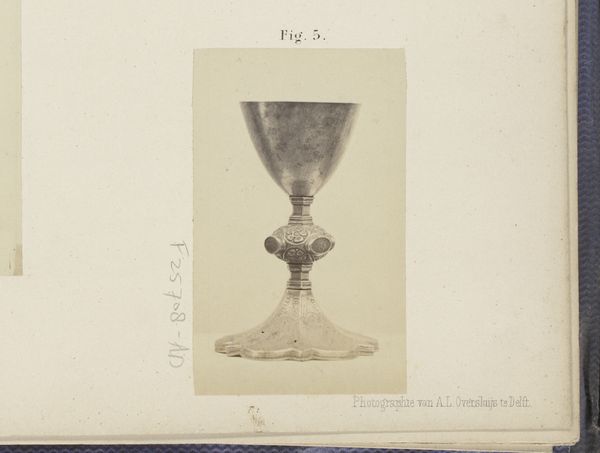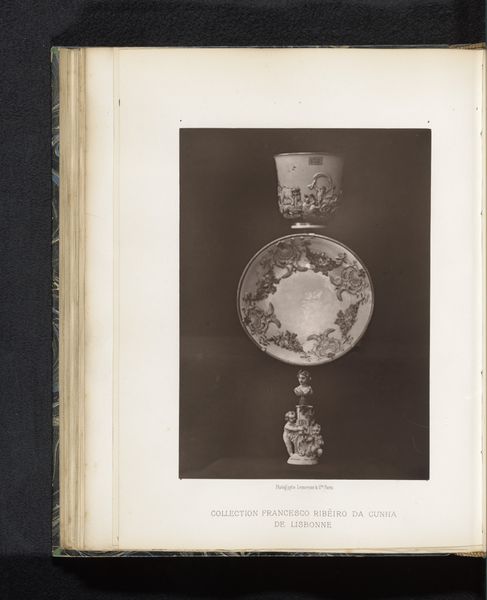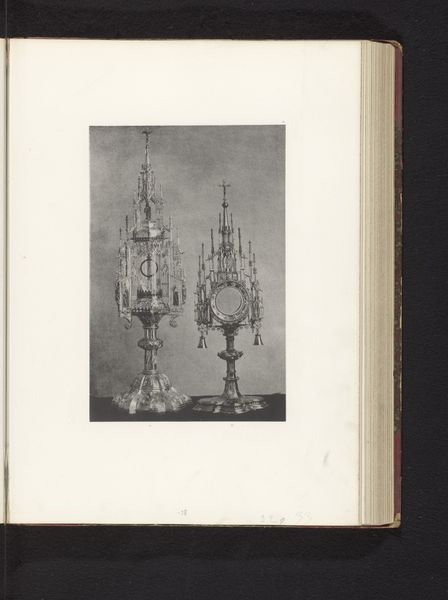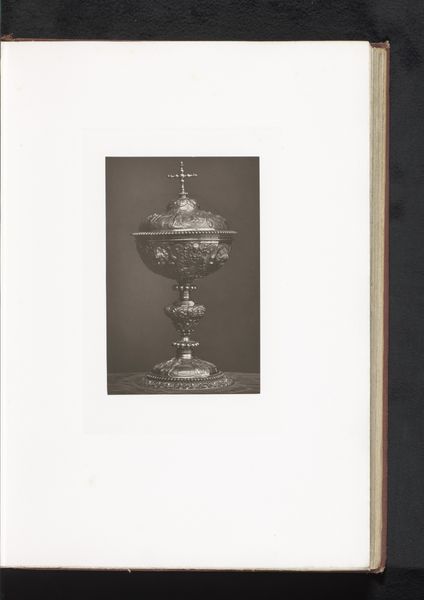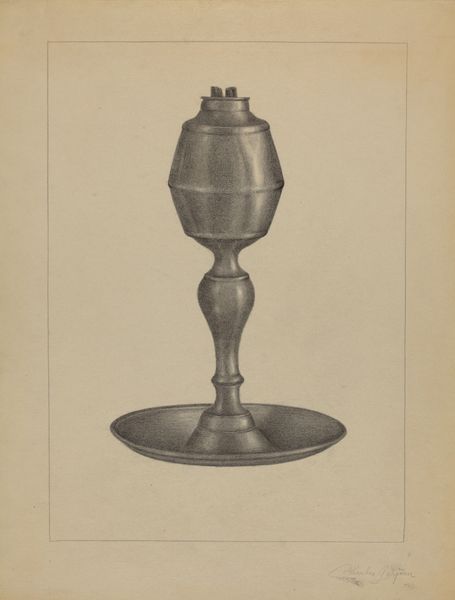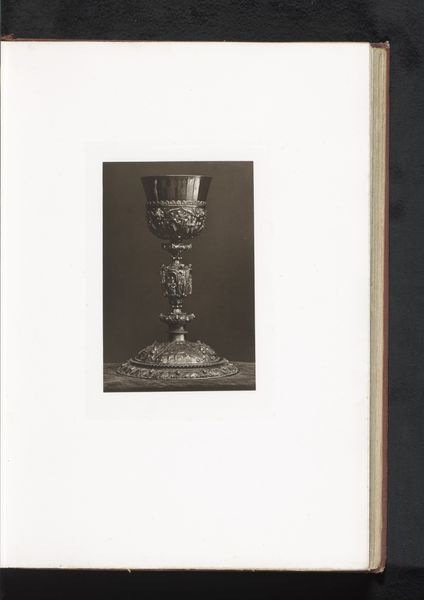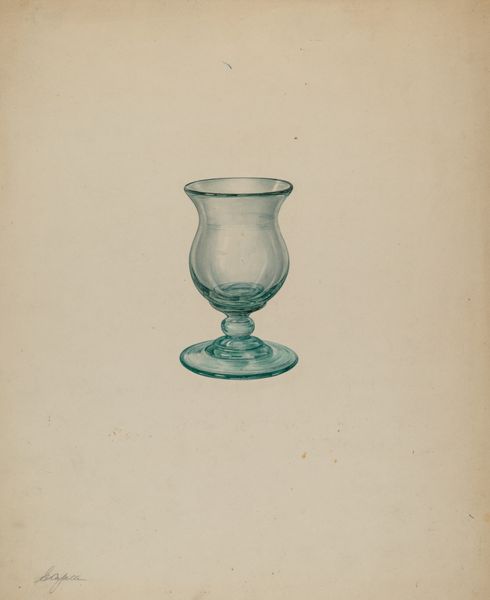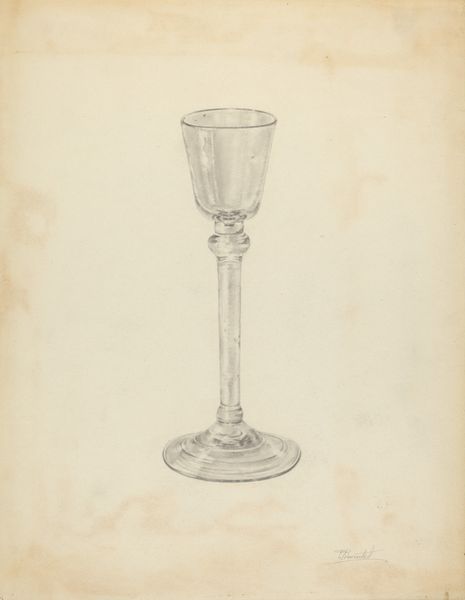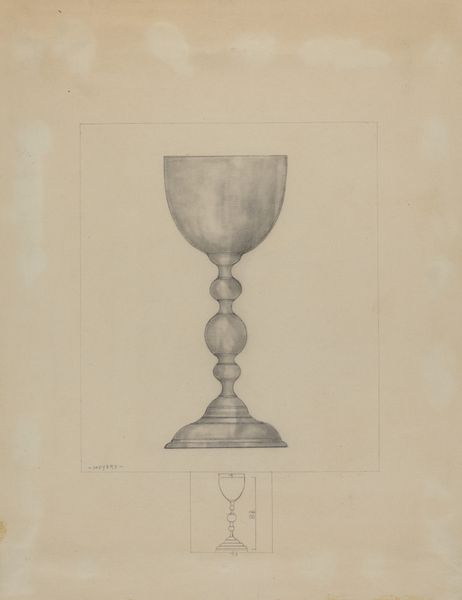
Twee kelken en een pateen, opgesteld op een tentoonstelling over religieuze objecten uit de middeleeuwen en renaissance in 1864 in Mechelen 1864
0:00
0:00
photography, gelatin-silver-print
#
sculpture
#
photography
#
gelatin-silver-print
#
history-painting
Dimensions: height 252 mm, width 195 mm
Copyright: Rijks Museum: Open Domain
Curator: Before us, we have a gelatin-silver print by Joseph Maes from 1864, entitled "Two Chalices and a Paten." The objects were photographed at an exhibition of religious artifacts. Editor: The light, the muted tones...it feels less like a celebratory showcase and more like an austere record of devotional objects. They are weighty symbols here, carrying layers of meaning, aren’t they? Curator: Precisely. Each chalice and the paten were skillfully crafted. Look at the bases, all so elaborate. These aren't mere drinking vessels; they represent considerable investment of labour and specialized skill in crafting precious metals for ritual use. This display highlights the economic significance attached to the creation of church items, blurring boundaries of devotion and finance. Editor: I am particularly drawn to the paten. That circular shape—a halo. Its gleaming surface almost appears to reflect the face of the divine, but with a somewhat distorted view. What do you make of its design? Curator: Its ornate decorations offer an insight into the religious beliefs and iconography of the period, right? But also, notice how this photograph elevates objects for the church into ‘art’ pieces displayed at exhibition, in that it abstracts liturgical instruments and renders them aesthetic, thereby obscuring, and in essence commodifying their religious utility. Editor: Good point. It's almost as though Maes sought to freeze them outside their normal religious context, placing them in a realm of historical and artistic appreciation. These chalices embody tradition, faith, perhaps even power of the Church. But also—do you see hints of the craftsman's signature there? It would give context to their social production, something often missed! Curator: An insightful remark. Through material analysis, the economic exchanges happening within and around ecclesiastical and social structures becomes illuminated through careful appreciation. So often historical works of this caliber conceal more then they offer; so really, as much historical study this artwork reveals about the shown medieval relics, it is, and should remain, open to further discussions of the same objects. Editor: Yes, the beauty is in their continuous unveiling. Thanks for highlighting aspects of craftsmanship, class and symbol here.
Comments
No comments
Be the first to comment and join the conversation on the ultimate creative platform.
